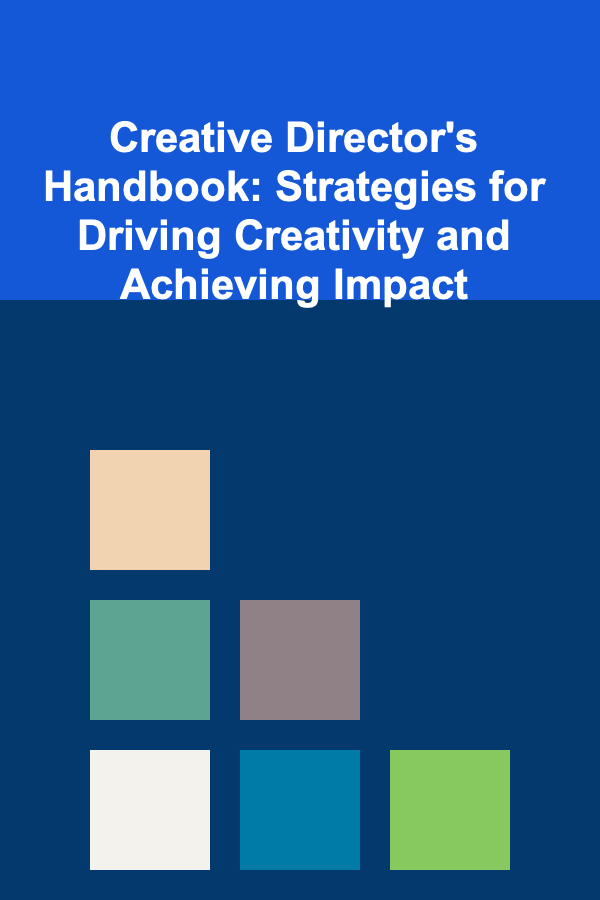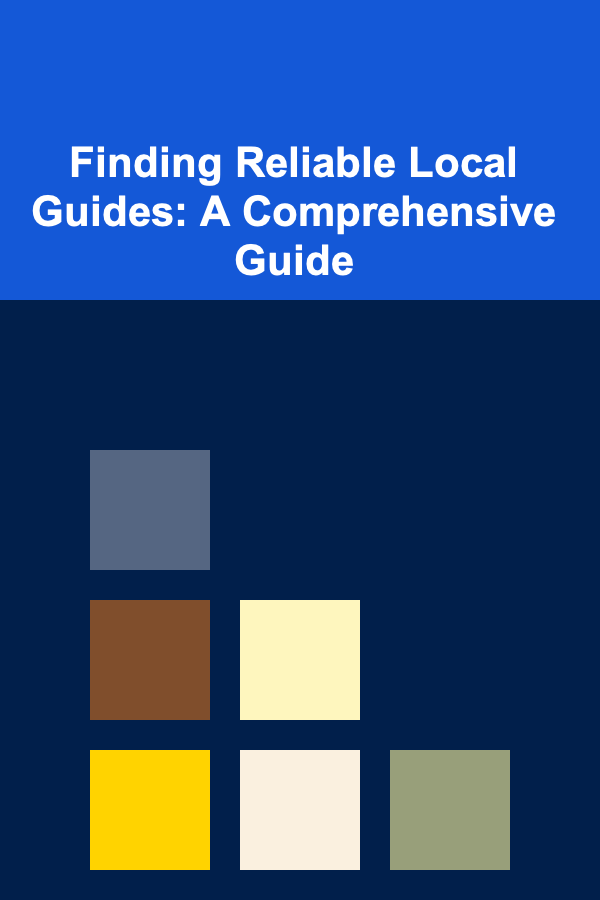How to Budget with Irregular Income: A Monthly Tracker Guide
ebook include PDF & Audio bundle (Micro Guide)
$12.99$10.99
Limited Time Offer! Order within the next:
Not available at this time
Managing a budget can be challenging for anyone, but if you have an irregular income, the task can seem even more daunting. Freelancers, entrepreneurs, gig workers, and others who don't have a set salary often face unpredictable monthly earnings, making it difficult to plan finances effectively. The good news is that with the right strategies and tools, it's entirely possible to take control of your finances and budget successfully, even with an income that fluctuates.
In this article, we'll guide you through how to create a budget that works for you, even when your income isn't consistent. We'll explore strategies for managing variable income, setting up a monthly tracker, and maintaining financial stability, no matter how much you earn from month to month.
Understanding Irregular Income
Before diving into how to budget with irregular income, it's essential to understand what it is and how it differs from a regular paycheck. Irregular income is any income that isn't consistent in amount or timing. This could include freelance work, contract jobs, commissions, seasonal employment, or side gigs. Unlike a salaried position, where you receive a fixed amount every month, irregular income can vary greatly from one period to the next.
Because of this unpredictability, it's critical to adjust how you budget, saving for leaner months and making the most of more prosperous ones. The goal is to ensure that you don't overspend when you're earning more, and that you don't struggle when earnings drop.
1.1 How Irregular Income Impacts Budgeting
Irregular income makes it harder to estimate monthly expenses because it's difficult to predict exactly how much you'll earn in a given month. This unpredictability requires careful planning and foresight. Inconsistent income can lead to challenges like:
- Difficulty saving
- Overspending during high-income months
- Inability to pay fixed bills during low-income months
1.2 Challenges of Irregular Income
Some challenges of budgeting with irregular income include:
- Varying Monthly Income: One month you may earn $5,000, and the next you might make just $2,000. This makes it hard to rely on a fixed monthly budget.
- Lack of Consistent Cash Flow: Cash flow issues can arise if there's a long delay in receiving payment for work or gigs.
- Difficulty Planning for Long-Term Goals: Without predictable earnings, it's challenging to allocate funds for savings, retirement, or other long-term financial goals.
Despite these challenges, it's possible to create a stable budget with the right approach.
Establishing a Base Income
To effectively manage irregular income, start by establishing your "base income." This is the minimum amount you can expect to earn in a given month, based on past income trends. It's helpful to take an average of your monthly income over the past year or several months, to determine a reliable baseline for budgeting.
2.1 Calculate Your Base Income
Look at the lowest monthly earnings over the past year and use that as a conservative estimate of your base income. For example, if you've earned between $2,000 and $5,000 each month, your base income might be around $2,000 (the lowest consistent monthly income). This will give you a safe starting point for your budgeting.
2.2 Budgeting with Base Income
Once you've established your base income, you can create a budget that ensures your essential expenses (rent, utilities, food, insurance, etc.) are covered, even during lower-earning months. By budgeting around this base income, you ensure that you never fall short on your critical obligations.
If your actual monthly earnings exceed the base income, you can allocate the surplus toward:
- Savings and emergency funds
- Paying off debt
- Non-essential expenses or fun activities
If your earnings are lower than the base income, you will be prepared by having saved extra funds during higher-income months.
Prioritize Fixed and Essential Expenses
A vital component of budgeting with irregular income is distinguishing between fixed and essential expenses versus discretionary spending. Fixed expenses are those that remain constant each month, such as rent, utilities, insurance, and loan payments. Essential expenses, though they may vary, are necessary for daily living, such as groceries and transportation.
3.1 Track Fixed Expenses
Identify all fixed expenses that remain the same every month, and make sure you set aside enough money each month to cover them. These include:
- Rent or mortgage payments
- Utility bills (electricity, water, internet)
- Insurance premiums
- Loan repayments (student, personal, etc.)
3.2 Plan for Essential Expenses
Essential expenses will change based on your lifestyle and needs, but they are non-negotiable. These expenses include:
- Groceries
- Transportation (gas, public transport)
- Childcare or education
- Health care costs
Make sure to prioritize these expenses first, even if your income fluctuates. In months when you earn more than your base income, you can put extra money toward your savings or non-essential expenses.
3.3 Eliminate or Reduce Discretionary Expenses
Discretionary expenses are the non-essential items or activities that you can adjust based on your monthly income. These include:
- Dining out
- Entertainment
- Subscriptions (streaming services, gyms, etc.)
- Shopping for non-necessities
In months where your income is lower than expected, focus on cutting back or postponing discretionary expenses. This can help free up more funds for your essential obligations.
Create a Monthly Income Tracker
To budget effectively, it's essential to create a monthly income tracker. This will help you monitor your cash flow, ensuring that you stay on top of irregular income.
4.1 Tracking Income Sources
If you have multiple sources of income (freelance gigs, part-time work, side projects, etc.), it's important to track each one individually. Create a simple spreadsheet or use budgeting software to keep a record of your earnings from all sources.
Here's an example of how you can structure your income tracker:
| Date | Source of Income | Amount Earned | Notes | |------------------------|-------------------|---------------|--------------------------| | 01/01 | Freelance writing | $1,200 | Completed three articles | | 01/15 | Client work | $500 | Received partial payment | | 01/25 | Online tutoring | $300 | Payment for five lessons | | Total Income (January) | | $2,000 | |
4.2 Managing Irregular Payments
If you work with clients or employers who pay on an irregular schedule (e.g., every 45 days or upon project completion), it can be challenging to predict when you'll receive payments. To account for this, consider:
- Setting aside a portion of your income during months when you earn more to cover leaner months.
- Building a cash buffer that can help you manage through gaps in payments.
This way, if one month is light on income, you'll have funds from previous months to fall back on.
4.3 Estimate Monthly Cash Flow
Use your tracker to estimate your cash flow for the upcoming month. Based on past income, you should have a general sense of how much you can expect to earn. Estimate your total monthly earnings, and subtract fixed and essential expenses to determine how much you'll have left for discretionary spending or savings.
Build an Emergency Fund
When budgeting with irregular income, one of the most important steps is to create an emergency fund. This fund will act as a financial cushion during months when your income is lower than usual, allowing you to maintain financial stability without relying on credit cards or loans.
5.1 How Much Should You Save?
The amount you should save depends on your lifestyle and how irregular your income is. As a general rule, aim to save at least three to six months' worth of essential expenses. For example, if your monthly expenses total $2,000, try to save between $6,000 and $12,000 for emergencies.
5.2 How to Save
- Save in good months: When you earn more than your base income, put the excess into your emergency fund.
- Automate savings: Set up automatic transfers to a separate savings account so that you're saving consistently, even if you have to budget tightly in a lean month.
- Use the 50/30/20 Rule: In months with higher income, follow the 50/30/20 rule:
- 50% for essential expenses
- 30% for discretionary spending
- 20% for savings and emergency fund
Stay Flexible and Adapt to Change
Budgeting with irregular income requires flexibility. Your financial situation can change, and your spending habits should adjust accordingly. Be prepared to revise your budget as needed, especially when your income fluctuates unexpectedly.
- Track and adjust: Regularly review your income tracker and adjust your budget to match your actual earnings.
- Stay disciplined: Don't let a few higher-earning months lead to overspending. Keep a disciplined approach to saving and managing essential expenses.
Conclusion
Budgeting with irregular income may seem intimidating, but it's entirely achievable with the right strategies. By setting a base income, prioritizing fixed and essential expenses, and creating a detailed monthly tracker, you can take control of your finances, no matter how much you earn each month. The key is to plan for both the high and low months, build an emergency fund, and stay disciplined in your approach.
With time, you'll gain confidence in managing your finances, and you'll be able to weather financial storms while maximizing the good months. Take the first step today by tracking your income and setting up your budget -- and you'll be well on your way to achieving financial stability, even with irregular income.

Creative Director's Handbook: Strategies for Driving Creativity and Achieving Impact
Read More
How to Build a Meeting Preparation Checklist for Virtual Meetings
Read More
How to Set Up a Family Craft Station at Home
Read More
How To Find the Best Language Learning Apps for You
Read More
The Art and Science of Homemade Mayonnaise
Read More
Finding Reliable Local Guides: A Comprehensive Guide
Read MoreOther Products

Creative Director's Handbook: Strategies for Driving Creativity and Achieving Impact
Read More
How to Build a Meeting Preparation Checklist for Virtual Meetings
Read More
How to Set Up a Family Craft Station at Home
Read More
How To Find the Best Language Learning Apps for You
Read More
The Art and Science of Homemade Mayonnaise
Read More